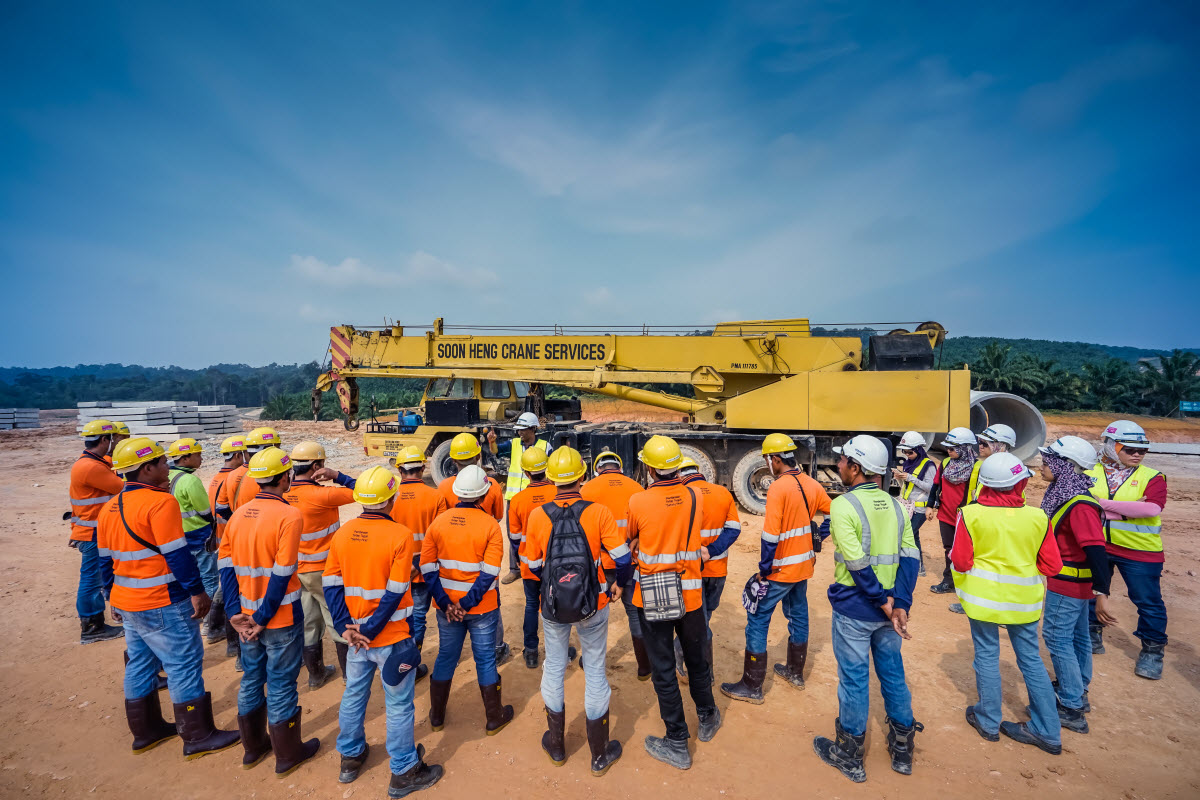What is a Toolbox Talk?
Tool Box Talks are brief and informal safety meetings that take place on the job site and include all parties working collectively within the environment from general employees to management. Held prior to the start of job shifts, toolbox talk topics discuss identification, prevention, and first aid response to hazards associated with the tasks at the job site. These meetings can be short at just 5-10 minutes; however, as simple and short as it may seem, toolbox talks have shown to promote a greater safety culture within the work environment.

Why Implement a Toolbox Talk?
Rather than relying on formally-held safety reviews, a toolbox Talk offers a succinct refresher to maintain occupational safety standards. Also referred to as a tailgate talk or safety briefing, a toolbox talk gives the team an opportunity for open and direct communication regarding any questions, concerns, or generating safety improvement ideas. Holding these talks enhances the safety culture and has proven to improve construction safety. These talks are not to replace OSHA’s formal training but rather to supplement mandatory training in short and informal manners.
General Discussion Topics
Contents of discussion during a toolbox talk should be predetermined by a foreman, supervisor, or other managerial role and relate to tasks being performed on the job site. Rather than generalized construction safety topics, teams should discuss specific hazards that pose a safety risk within the worksite currently as well as upcoming tasks or projects.
Toolbox talk topics include, but are not limited to:
- Personal protective equipment (PPE)
- Confined spaces
- Electrical safety
- Fall protection
- Near misses
- Asbestos
- Power lines
- Ladder safety
- Power tools
- Forklift
- Fire extinguishers
- Lockout/Tagout
- Gas cylinders
- Respirators
- Scaffold safety
Tips on Creating a Toolbox Talk
An effective toolbox talk is a brief but value-adding short discussion that is an informal method of promoting general workplace safety and maintaining a safety culture on construction sites.
Here are some general tips to ensure your next toolbox talk is effective:
- Pre-plan meetings at regular intervals. This could be at monthly, weekly, or other intervals. Ensure that this meeting schedule is consistent to better support the safety culture.
- Pick relevant topics that relate to the tasks at hand. This can include current tasks or tasks required for a future project.
- At the beginning of the meeting, it is best to communicate the importance of holding safety training.
- Ensure to keep the conversation informal. While doing so, have a written guide like a toolbox talk checklist to cover all talking points.
- Relate the conversation with equipment and other visual material present on the worksite.
- Summarize the discussion at the end to magnify the key points and takeaways.
- Draw engagement from the team by asking direct questions relating to identifying any workplace hazards and ways to avoid accidents/fatalities.
- Request a signoff by individuals participating in the Toolbox Talk for attendance purposes.

30+ Audit and inspection checklists free for download.
General Toolbox Talk Template
Certainty Software is a powerful and trusted enterprise-level audit and inspection management solution and is a proven solution for any audit/inspection-based performance improvement program. Covering many industries – including the construction industry, Certainty Software provides a simple general safety Toolbox Talk checklist that will support your safety programs and improve workplace safety.
You may also be interested in:
4 Considerations when Improving Safety in the Construction Industry



